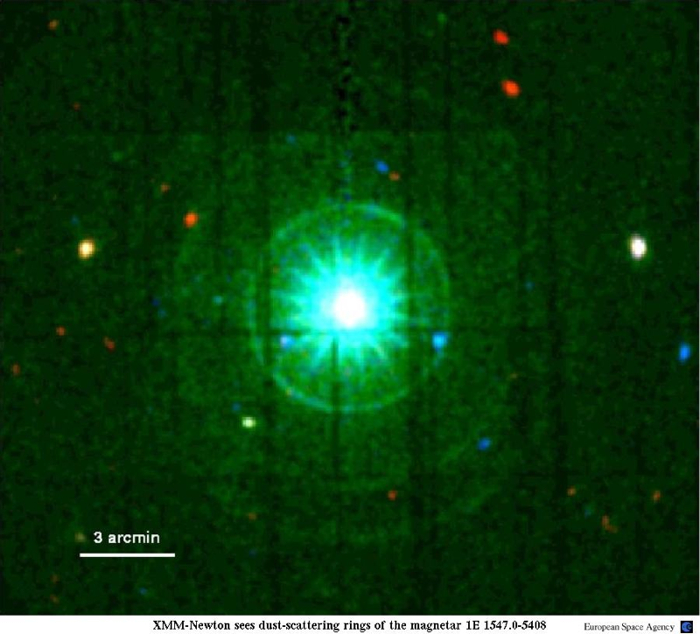
 Credit: ESA & A. Tiengo et al.
Credit: ESA & A. Tiengo et al.
Dirty Universe
Dust in space is an annoying material, making things seem fainter than they really are. But dust is important too, since these solid particles may be the tiny seeds out of which larger solid bodies, like complex molecules, comets and planets,are formed. Astronomers have a keen interest in understanding the composition of interstellar dust, its distribution and its density. Just like here on earth, sometimes you need to switch on the light to reveal dust best. The image above shows an X-ray image (taken by the XMM-Newton X-ray observatory) of a neutron star called 1E 1547.0-5408. This neutron star belongs to a rare, strange class of objects called Anomalous X-ray Pulsars. AXPs possess extremely high magnetic fields (so they are often called magnetars) and they can be very variable. The XMM image above shows the AXP as a bright white object in the center of the image, and was taken shortly after an outburst of X-rays by the AXP. The outburst was so bright that it illuminated clouds of dust between us and the AXP. These clouds scatter the X-ray flash towards us, but on a time delay, and produce the concentric rings around the AXP seen in the XMM-Newton image. Analysis of the size and brightnesses of the rings helps astronomers not only determine the properties of the dust clouds, but also constrains the distance to the magnetar.
Published: April 19, 2010
<
HEA Dictionary ● Archive
● Search HEAPOW
● Other Languages
● HEAPOW on Facebook
● Download all Images
● Education ● HEAD
>

Each week the HEASARC
brings you new, exciting and beautiful images from X-ray and Gamma ray
astronomy. Check back each week and be sure to check out the HEAPOW archive!
Page Author: Dr. Michael F. Corcoran
Last modified Monday, 26-Feb-2024 17:24:29 EST


